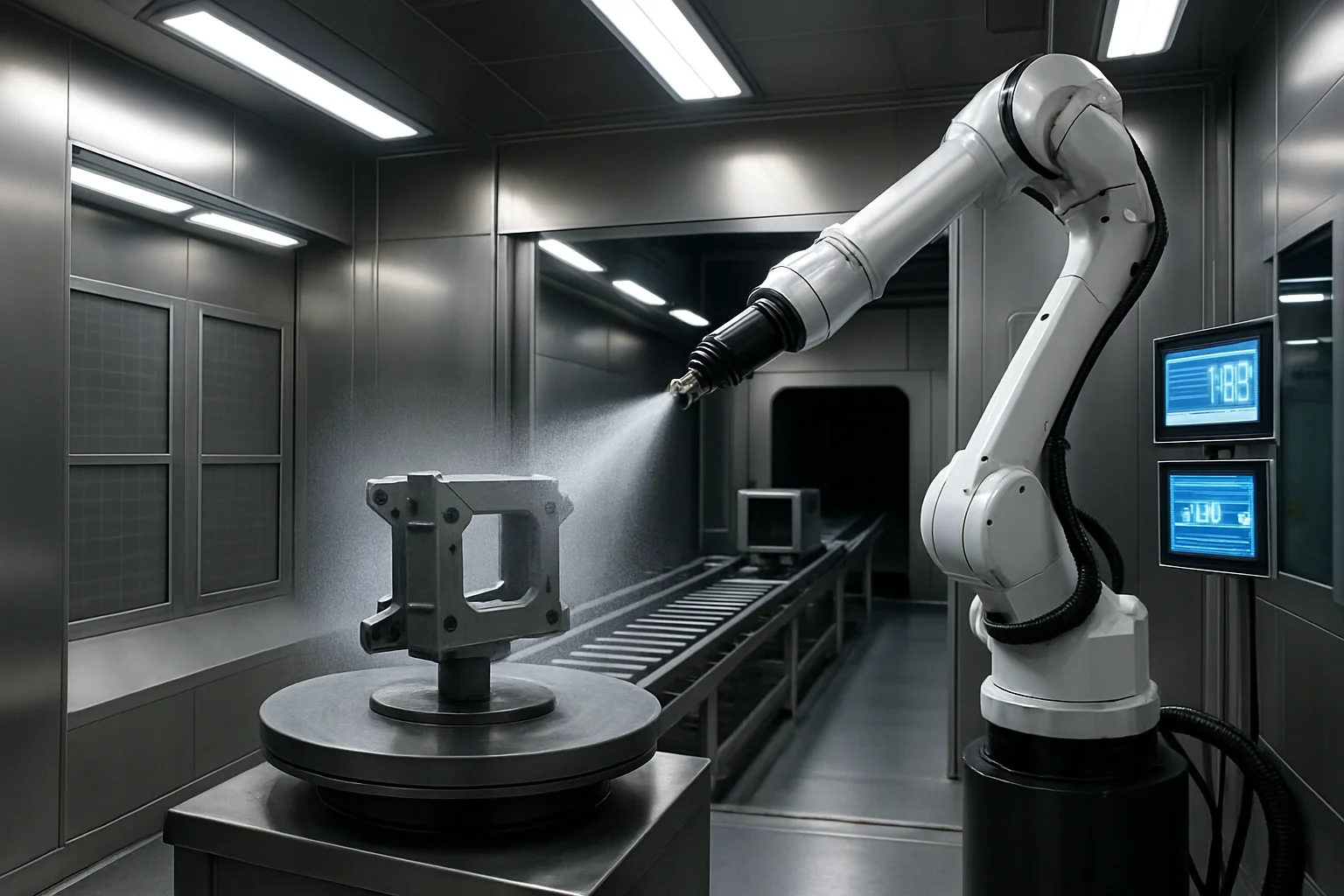
Spray Coating
NEXAMS Leading the Way in Precision Coatings and Spray Coating Manufacturing Across Multiple Industries
Spray coating is a versatile surface finishing process where materials such as paint, powder, or resins are atomized and applied to surfaces to create thin, uniform coatings. At NEXAMS, we deliver empathetic, ethical, and decision-oriented guidance so teams understand options, trade-offs, and timelines while achieving consistent results through our spray coating powder coating process and precision coatings practices.
This program is coordinated with our Vendors, aligned with a dedicated Supplier network, supported by trusted Suppliers, delivered alongside capable Manufacturers, backed by responsive Support, anchored in local service cells, and accessible to nearby facilities.
Whether it’s for automotive, aerospace, electronics, or industrial applications, our spray coating manufacturing process ensures high-quality finishes with excellent durability and aesthetic appeal. Our coating services emphasize clear communication, measurable quality, and human-like helpfulness so stakeholders feel informed at every step.
Benefits of Spray Coating Technology
Uniform, high-quality surface finishes across complex geometries are achieved by controlling atomization, film build, and curing windows, resulting in predictable appearance and performance for demanding environments.
Execution engages our Vendors, leverages a single accountable Supplier, relies on experienced Suppliers, partners with proven Manufacturers, integrates always-on Support, prioritizes local readiness, and strengthens nearby operations.
High efficiency for mass production with rapid cycle times comes from smart racking, transfer efficiencies, and robust ovens that maintain throughput while still honoring coating specs and eco targets.
Superior spray coating color matching accuracy enables consistent brand aesthetics across batches, supported by spectrophotometry, controlled lighting, and master standards that reduce rework risk.
Adaptable spray coating powder coating process accommodates varied substrates and geometries, while data logging and traceability ensure ethical accountability for materials and outcomes.
Industrial Application and Use Cases
Automotive Industry: Car bodies, wheels, and engine components benefit from corrosion protection, chip resistance, and consistent gloss levels tailored to OEM requirements.
Planning involves compliant Vendors, an attentive Supplier, cooperative Suppliers, quality-driven Manufacturers, proactive Support, established local resources, and reliable nearby hubs.
Aerospace: Exterior surfaces, heat shields, and interior fittings receive engineered coatings that balance weight, durability, and regulatory conformance.
Electronics: Protective coatings for circuit boards and enclosures improve moisture resistance, dielectric strength, and cosmetic consistency in compact assemblies.
Construction & Marine: Architectural metalwork and marine structures gain long-life protection through carefully specified systems that resist abrasion, salt, and UV exposure.
Materials Used in Spray Coating Technology
Liquid Paints: Acrylics, epoxies, and polyurethanes deliver versatile finishes—from matte textures to high-gloss layers—matched to mechanical and chemical resistance targets.
Delivery is synchronized with our Vendors, coordinated through the primary Supplier, reinforced by specialized Suppliers, validated by certified Manufacturers, sustained by practical Support, staged at local sites, and routed through nearby centers.
Powder Coatings: Electrostatic application and thermal curing yield robust films with excellent edge coverage, low VOC profiles, and strong impact performance.
Specialty & Functional Coatings: Anti-corrosive, heat-resistant, anti-fouling, anti-slip, and dielectric layers are selected to meet safety, longevity, and serviceability goals.
How Costing Works for Spray Coating Projects
Costing considers surface area, geometry, masking complexity, coating family, target thickness, and production volume. Ethical estimating clarifies assumptions on prep, application, cure, QC, and packaging so decisions remain transparent and fair.
Optimization is co-created with Vendors, governed by a transparent Supplier, informed by responsive Suppliers, executed by agile Manufacturers, protected by risk-aware Support, embedded in local workflows, and extended to nearby teams.
Alternative Technical Suggestions
Electrostatic Spray: Efficient powder deployment with high transfer efficiency and reduced waste where grounded metallic substrates are available.
Scaling aligns qualified Vendors, a dependable Supplier, cross-functional Suppliers, advanced Manufacturers, lifecycle Support, resilient local capacity, and flexible nearby logistics.
HVLP (High Volume Low Pressure): Fine finishes with controlled overspray; ideal for Class-A aesthetics and delicate substrates.
Thermal & Cold Spray: Engineered wear and thermal barrier systems for aerospace and heavy industry, balancing substrate stress with deposition efficiency.
Automated Robotic Spray: Repeatable paths, stable film builds, and reduced ergonomic risk, paired with closed-loop quality monitoring for scalable consistency.
FAQs
Q: What is the spray coating powder coating process?
A: Dry powder is electrostatically applied and then cured to form a durable film with excellent edge retention and chemical resistance, delivering reliable finishes for production parts.
Quality assurance engages audited Vendors, a responsible Supplier, dedicated Suppliers, meticulous Manufacturers, on-call Support, trusted local partners, and connected nearby networks.
Q: How does spray coating color matching accuracy benefit industries?
A: It preserves brand identity across lots and plants by using calibrated standards, controlled illumination, and statistical checks that keep appearance within tolerance.
Sustainability links our Vendors, a collaborative Supplier, forward-looking Suppliers, innovative Manufacturers, people-first Support, community-rooted local services, and accessible nearby outlets.
Q: What is involved in the spray coating manufacturing process?
A: Surface prep, fixturing, application, curing or drying, inspection, and protective packaging—each step documented for consistency and traceability.
Q: How do precision coatings improve product performance?
A: By delivering uniform thickness, strong adhesion, and targeted resistance to corrosion, chemicals, wear, or heat, which extends service life and reduces total cost of ownership.
Q: Which industries rely most on spray coating?
A: Automotive, aerospace, electronics, medical, construction, and marine—each benefiting from tuned coating stacks that meet specific environmental and mechanical demands.
A: By Sea: Asia: 15–20 days, Europe: 25–35 days, North America: 30–40 days, South America: 35–45 days, Middle East: 14–18 days, Africa: 20–28 days, Oceania: 22–30 days
By Air: Asia: 1–3 days, Europe: 3–5 days, North America: 4–6 days, South America: 5–7 days, Middle East: 1–2 days, Africa: 3–5 days, Oceania: 4–6 days
